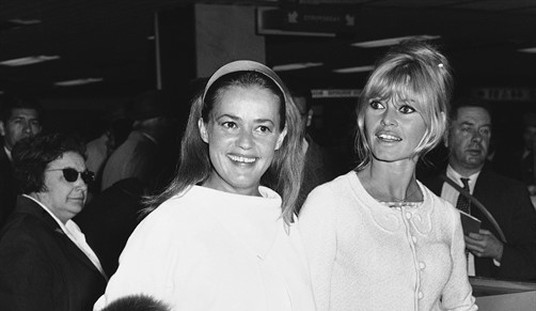I have a small confession to make: I didn’t think Thom Tillis would win the North Carolina Senate race; but I have never been so glad to be proven wrong! His first debate against now–former Sen. Kay Hagan was anything but spectacular; it was quite lackluster, as was Hagan’s performance. But, there was a lot of time to improve–and Tillis surely succeeded in that feat. When Townhall spoke with the Senator-elect last October, he was articulate, poised, and full of confidence. He was ready to be North Carolina’s senator–and on Nov. 4 the voters in the Tar Heel State gave their seal of approval.
So, how did he do it?
North Carolina was not a slam-dunk for the Republicans. This was a state where Romney barely won in 2012, where races usually break late, and where winners clinch victory within single digit margins. Far from the double-digit margins in Montana, South Dakota, West Virginia, and Arkansas, which were solid Republican pickups. They were also states where Romney won by 10+ points or more.
Sen. Hagan ran a rather aggressive campaign hitting Tillis’ record in the state legislature, specifically on women’s issues and education. Her campaign singled out teacher pay and $500 million in education cuts to finance tax cuts for the wealthy; a claim that left-leaning PolitiFact deemed “half-true.”
Tillis, who will soon be a former Speaker of the North Carolina House of Representatives, could not address these attacks for most of the summer since Raleigh was in session. Nevertheless, Tillis understood that races tend to break late in the Tar Heel state–and Hagan’s money advantage would have him trailing during that period of time; Hagan had a steady 4-point lead for most of the summer and fall months.
On the other hand, Tillis kept repeating that Hagan voted with Obama 96 percent of the time, was a rubber stamp for the Obama-Reid agenda, and broke too many promises to earn re-election.
In 2008, Hagan herself used then-Sen. Elizabeth Dole’s 92 percent voting record with Bush against her in the 2008 election.
In the battle of narratives, it was the “sins of Raleigh” versus the sins of Washington.
Recommended
The shift began when foreign policy became more of a prominent issue. Questions on the Islamic State and Ebola were not being asked on the campaign trail, which didn’t bode well for Hagan who was accused of missing Armed Services hearings. She finally admitted to skipping one for a fundraiser in New York. That was a turning point.
This, coupled with the fact that Republicans are more trusted in handling national security issues than Democrats, caused the needle to swing in Tillis’ direction. Additionally, her flip-flop on the Ebola travel ban wasn’t the best in political optics.
Also, Hagan’s family became embroiled in controversy when it was discovered her husband, Chip, received stimulus funds for his business–and then pocketed the savings. Ethical questions were raised to the point where the N.C. Department of Environmental and Natural Resources and wrote in their staff review that the Hagan family business should have a legal review regarding this cash injection.
Still, this was a highly partisan election, where turnout was going to be the deciding factor; this is where Democrats faced a monumental problem in North Carolina, which Nate Cohn noted last April (via NYT) [emphasis mine]:
The state is divided between older, culturally Southern and conservative voters, and younger, more diverse and more liberal voters, especially around the Research Triangle and Charlotte.In presidential elections, those two groups fight nearly to a draw. In midterm elections, when older voters turn out at much higher rates than younger ones, the Republicans have a big advantage.
…
When young voters stay home, the state reverts to its Republican past and the more conservative bent of the South. And judging from the last midterm election, the plunge in youth turnout could be huge. Eighteen- to 25-year-olds accounted for a mere 3.9 percent of voters in 2010, down from 10.4 percent of voters in 2008, according to the secretary of state’s office. Older voters jumped from 17.5 to 26.1 percent of those turning out.
That’s a big problem for Ms. Hagan. She originally won her seat in 2008, when she won by a decisive 8 points. But her entire margin of victory came from voters under 30, who gave her a staggering 71 percent of their votes and represented about 17 percent of the electorate. If the voting public had been as old and white as it was in the 2010 midterms, Ms. Hagan’s share of the vote would have fallen beneath 50 percent; she still would have won, helped by a libertarian candidate, Chris Cole, who appeared to erode the vote for her Republican opponent.
To win such an old electorate in 2014, Ms. Hagan would need to retain nearly all of her support from six years ago. There are plenty of reasons to doubt her ability to do so.
In the end, Democratic voter turnout was at its lowest levels in 30 years, which didn’t bode well for Hagan.
Turnout was down in Charlotte, and Hagan lost New Hanover County, which includes the city of Wilmington, which she won handily in 2008.
With a highly partisan election like this, it’s all about turnout.
According to exit polls, 91 percent of North Carolina Democrats voted for Hagan, while 93 percent of Republicans voted for Tillis. Polls did show that both campaigns really shored up base support heading into Election Day.
As Cohn noted, the youth vote went for Hagan; 25-29 year olds broke for Hagan over Tillis 59/34, as did 30-39 year-olds 57/39. But, Tillis was competitive with 18-24 voters, where he only lost them to Hagan by 3 points 47/44.
As to the question about the evangelical voters, they showed up for Tillis 78/16. Another interesting take is that Tillis won the middle class vote ($50k-100K) by a comfortable 52/44 margin over Hagan.
One could hypothesize that this was due to Tillis reiterating his very humble upbringing, overcoming economic adversity, and being an example of American social mobility; the man grew up in a trailer park, worked minimum wage jobs, and is now a U.S. Senator–that’s nothing short of remarkable.
As for the economy, 75 percent of voters said they were worried about our current situation; they unsurprisingly broke for Tillis 60/37. Forty-four percent said the economy was the most important issue facing the country; they also broke for Tillis over Hagan 52/44.
In terms of education, Hagan only won postgraduates; high schools grads, college grads, and those who dabbled a little in higher education all broke for Tillis.
As for the native versus transplant dynamic, 54 percent of voters said they were born in the state, while 45 percent said no. The native broke for Tillis 53/44, while transplants went with Hagan 51/46.
Lastly, 36 percent of the vote came from urban areas, which broke heavily for Hagan 61/36, but Tillis clinched the suburban (37 percent of the vote) and rural areas (27 percent) 57/39 and 53/42 respectively.
Based on 2008’s exits, the urban/suburban/rural dynamic barely changed; Tillis did better than then-Sen. Elizabeth Dole, but no real shifts. What did change was the economy.
In 2008, 60 percent North Carolina voters said the economy was the most important issue, and they broke for Hagan over Dole 52/44. Eighty-six percent of votes were worried about “economic conditions,” and broke for Hagan 50/46. Yet, the split became more defined with the 36 percent who described themselves as “very worried” about economic conditions; they went for Hagan overwhelmingly 57/39.
Hagan also won high school graduates and college graduates six years ago, along with 31 percent of the evangelical vote; she only got 16 percent this year.
As for income, Hagan won the middle class ($50k-$75k) that year 53/46.
While she initially led Tillis in the vote count on election night, her losses with the middle class, religious voters, college graduates, and high school graduates, were enough to push Tillis over the top.
As for Hispanic voters, there is no information available, but the fact that immigration activists decided to fire inside the ship towards the end of the 2014 cycle was probably something Hagan didn’t want. Immigration is not an issue that favors Democrats–and one that gets the GOP base animated like no other.
As for the advantage Democrats had in early voting, it was good; more Democrats voted this year than in 2010, but it was not enough to counter the projected Republican turnout. Furthermore, Democrats lead by double digit margins I early voting in 2012–Romney still won the state.
There’s also the added benefit for Tillis that everyone misrepresented the impact of the Republican wave. And Libertarian Sean Haugh’s campaign didn’t do Hagan any favors as it looks like he siphoned votes away from her during this campaign, although Elon University poll director Kenneth Fernandez said the result would likely have been the same, albeit tighter.
Nevertheless, some folks at ABC News still consider Hagan a winner during this election cycle.

























Join the conversation as a VIP Member